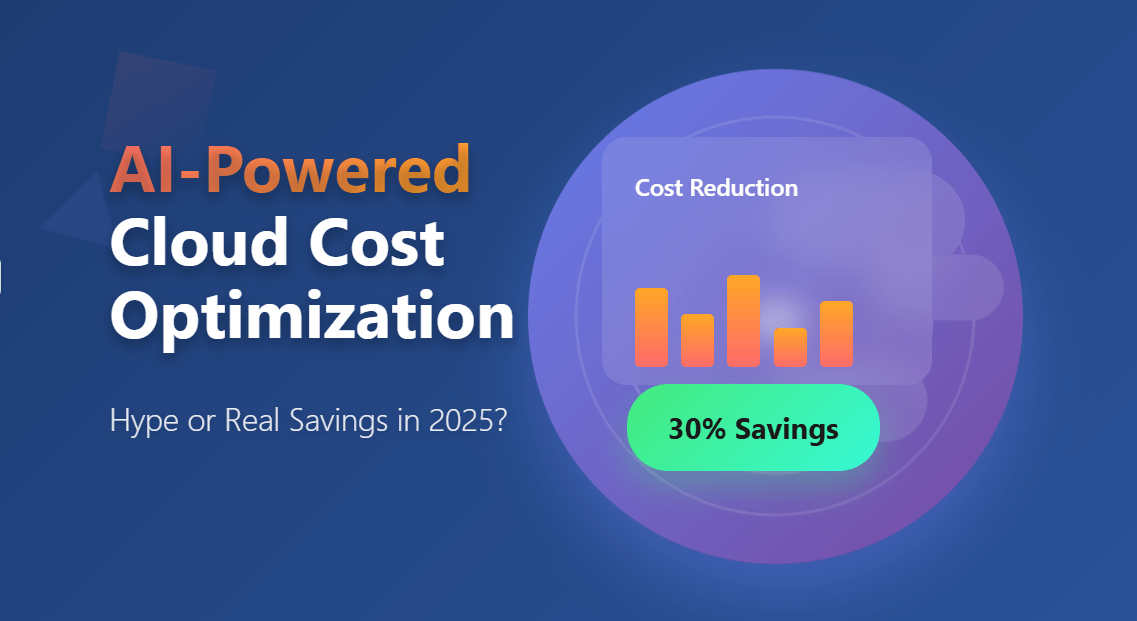
As we step deeper into 2025, the corporate world is abuzz with one question: Is AI-powered cloud cost optimization just a flashy trend, or does it deliver tangible savings? With global cloud and SaaS usage growing exponentially, the need for smarter, automated financial management tools has never been greater. Enter artificial intelligence—an innovation poised to reshape how businesses manage cloud resources and SaaS sAI-Powered Cloud Cost Optimization: Hype or Real Savings in 2025?
As we step deeper into 2025, the corporate world is abuzz with one question: Is AI-powered cloud cost optimization just a flashy trend, or does it deliver tangible savings? With global cloud and SaaS usage growing exponentially, the need for smarter, automated financial management tools has never been greater. Enter artificial intelligence—an innovation poised to reshape how businesses manage cloud resources and SaaS subscriptions.
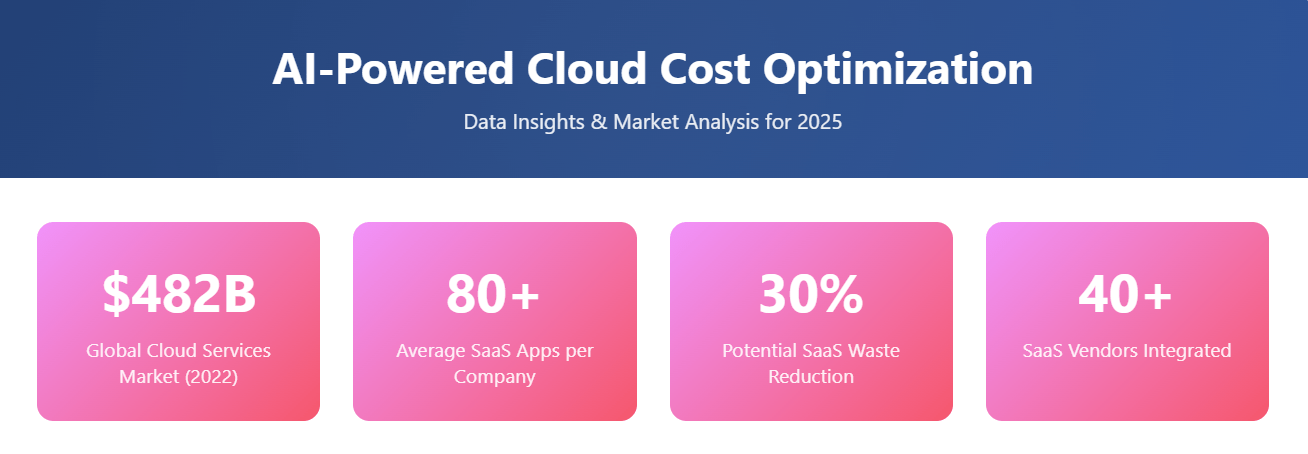
The Promise of AI in Cloud Cost Management
AI is transforming cloud computing from a static infrastructure into a dynamic, self-optimizing ecosystem. Traditional cost optimization requires continuous manual audits, usage tracking, and resource right-sizing. In contrast, AI enables real-time anomaly detection, predictive forecasting, and automated remediation, providing CFOs and IT managers with actionable insights they can trust.
Solutions like Binadox utilize AI to monitor cloud workloads, identify underutilized resources, and recommend cost-saving actions tailored to specific usage patterns. Whether you’re on AWS, Azure, GCP, or DigitalOcean, AI now allows for fine-grained control of spend—without daily spreadsheet crunching.
Additionally, AI-based recommendations take historical trends, workload cycles, and business events into account—something static alerts and rules-based engines often miss. This shift enables organizations to move from reactive cost control to proactive financial planning.
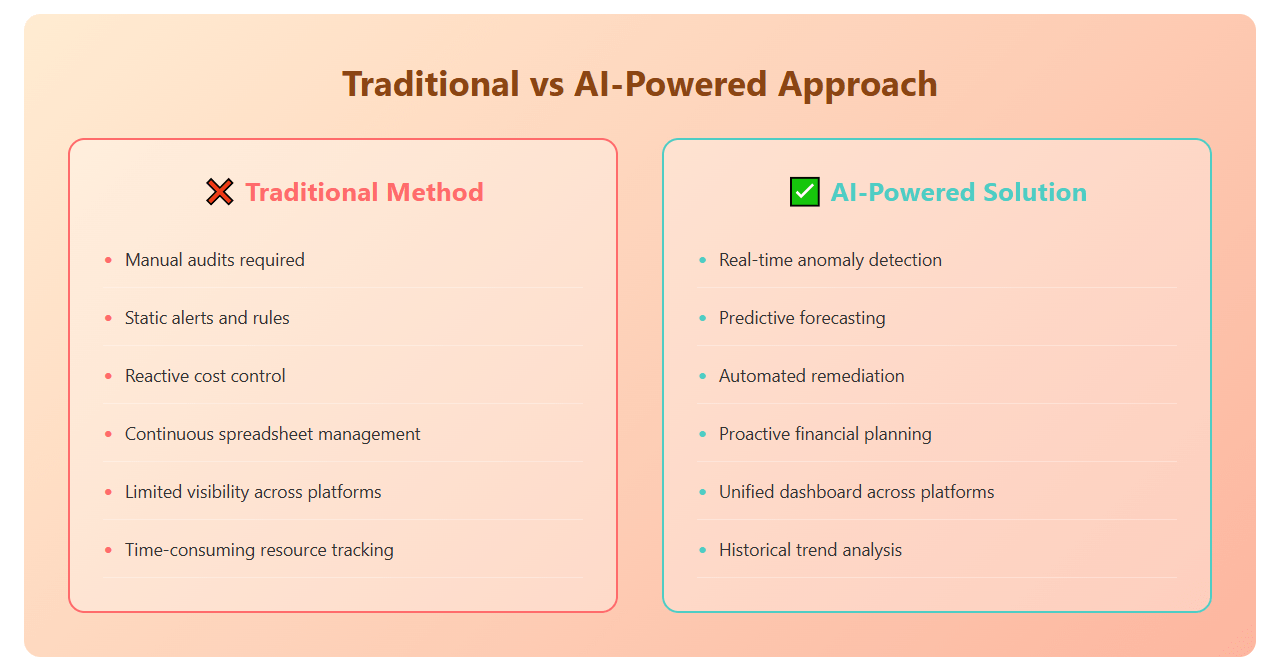
AI also plays a pivotal role in identifying trends and drawing insights across business units. It evaluates performance metrics and financial KPIs over time to identify seasonal spending patterns and resource utilization shifts. This is especially valuable for enterprises with global operations, where regional cost variations and time-based consumption must be tracked dynamically.
Moreover, the learning capabilities of AI improve with time. As the system interacts with your environment, it becomes better at forecasting future spending and uncovering inefficiencies that would otherwise go unnoticed in traditional reporting dashboards.
The Economics of Cloud and SaaS in 2025
Cloud spending continues its sharp climb. According to Gartner, global cloud services—including SaaS—reached $482 billion in 2022, and they show no sign of slowing down. Companies are often juggling 80+ SaaS applications, leading to hidden costs from unused licenses, redundant tools, and overlapping subscriptions.
AI-powered tools can detect these inefficiencies with precision. For instance, Binadox tracks SaaS license usage across departments, flags abandoned subscriptions, and predicts when to renew or cancel based on historical usage trends. With features like a Renewals Calendar, License Manager, and user-level utilization data, businesses can cut SaaS waste by up to 30%.
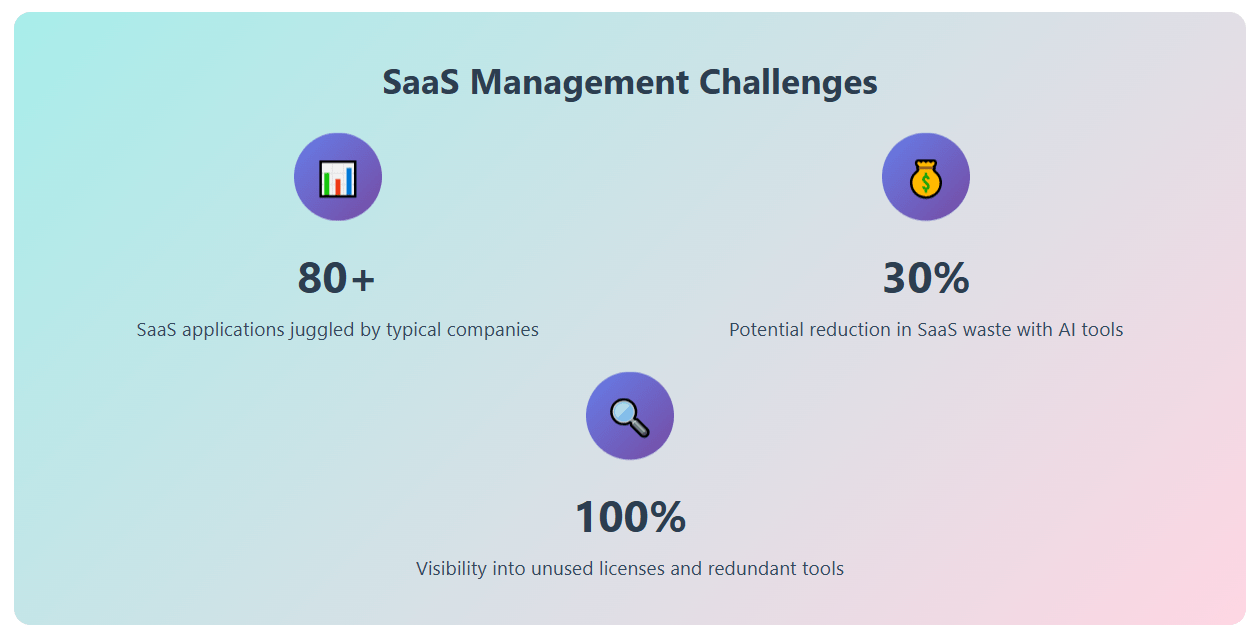
This financial visibility is critical for CFOs aiming to maintain profitability without sacrificing innovation. In fact, organizations that use AI for cost optimization report higher ROI from cloud investments, especially in dynamic industries like fintech, healthcare, and digital media.
As more organizations adopt a multi-cloud or hybrid cloud strategy, complexity—and thus, costs—increase. AI helps untangle these complexities by offering unified views of spend across environments. Predictive analytics enables proactive budget planning, ensuring that finance teams are prepared for spikes in usage caused by product launches, seasonal campaigns, or customer growth.
Additionally, with regulatory scrutiny increasing, especially around data sovereignty and vendor risk management, AI offers built-in monitoring that aligns financial operations with compliance mandates. This added value positions AI not just as a cost cutter but a strategic enabler of governance.
Automation That Delivers—Not Distracts
One of the criticisms AI faces in this space is overpromising. Some platforms flaunt automation but require constant oversight or fail to align with business workflows. Binadox counters this by offering rule-based automation that takes action when specific thresholds are met—like auto-alerting when a team exceeds its monthly budget or automatically tagging new cloud assets for billing segmentation.
Moreover, integrations with over 40 SaaS vendors and major cloud providers mean you don’t need multiple platforms to track different environments. Everything is unified in a single-pane dashboard, streamlining both operations and reporting.
Another major benefit is the ability to scale optimization across distributed teams and hybrid environments. As remote work and decentralized operations become the norm, AI ensures consistent policy enforcement and cost control—even when infrastructure spans multiple regions.
One overlooked advantage of AI-based automation is human error reduction. Manual processes, especially in finance, are error-prone and time-intensive. By contrast, AI engines apply consistent logic and validation rules, ensuring cleaner data and more reliable outcomes.
Furthermore, as AI matures, it’s expected to enable prescriptive decision-making—going beyond ‘what happened’ and ‘why’ to suggest exactly ‘what to do next’. This level of intelligence is particularly powerful in managing sprawling cloud footprints where speed and precision are critical.
Use Cases: From Theory to Practice
Let’s explore common business scenarios where AI in cloud cost optimization becomes indispensable:
Another strong use case is cloud migration. When organizations shift workloads from on-prem to the cloud or between providers, AI assists in planning and forecasting the cost impact of different migration paths. It identifies underutilized assets that shouldn’t be moved and optimizes target architectures for the best ROI.
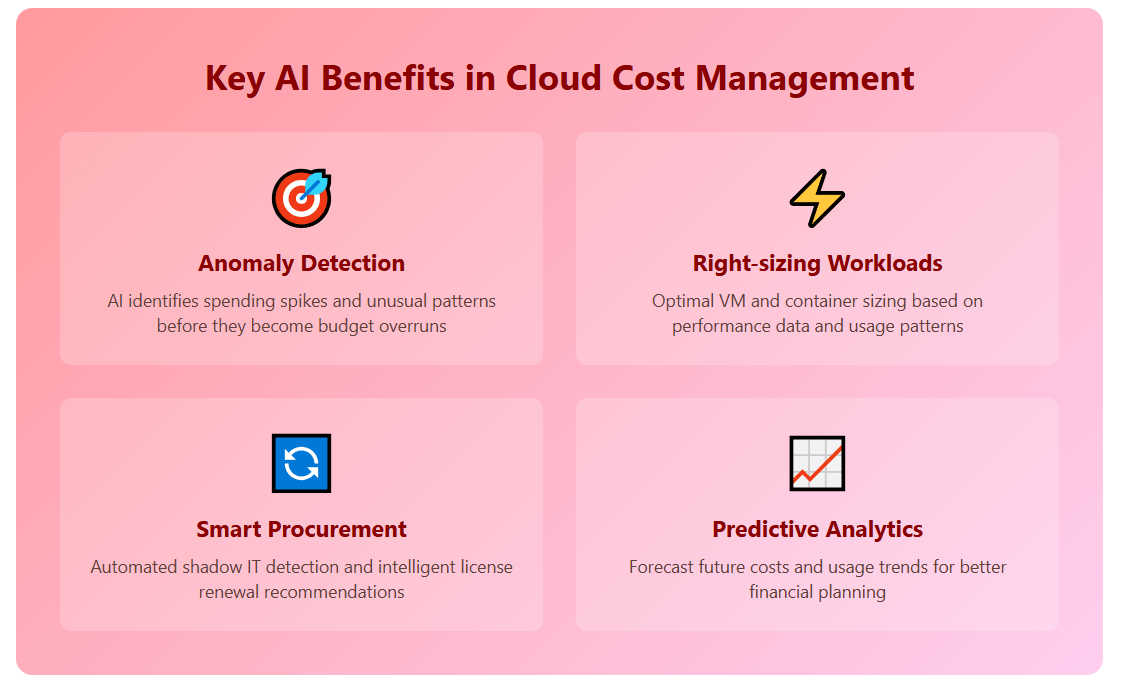
Similarly, in the context of M&A activity, where IT portfolios are often duplicated, AI helps consolidate systems, rationalize vendors, and standardize configurations to optimize spend post-merger. These strategic uses showcase how AI-driven tools support high-level business transformation.
- Anomaly Detection: Binadox’s Cost Explorer uses AI to identify spikes in daily spending, helping avoid budget overruns before they escalate.
- Rightsizing Workloads: The platform suggests optimal VM or container sizes based on performance data—ideal for DevOps teams managing hybrid workloads.
- Smart SaaS Procurement: Automatically detect shadow IT, centralize procurement, and renegotiate licenses with underused vendors using AI-powered spend analytics.
Real-world deployments have shown measurable gains. Companies adopting AI tools report reduced billing surprises, faster remediation of overspending, and improved user accountability. Teams can focus on innovation rather than spend policing.
The Bottom Line: Hype or Real Value?
In 2025, AI-powered cloud cost optimization is no longer hype—it’s essential. As cloud and SaaS ecosystems grow more complex, manual management becomes unsustainable. Companies that adopt AI-driven platforms like Binadox are finding not just cost savings, but increased operational agility, improved forecasting, and tighter compliance controls.

Ultimately, AI isn’t here to replace your finance or IT teams. It’s here to empower them—with faster insights, fewer blind spots, and better decisions. And as the cloud becomes the foundation of digital business, cost optimization powered by AI will evolve from a best practice into a competitive imperative.

